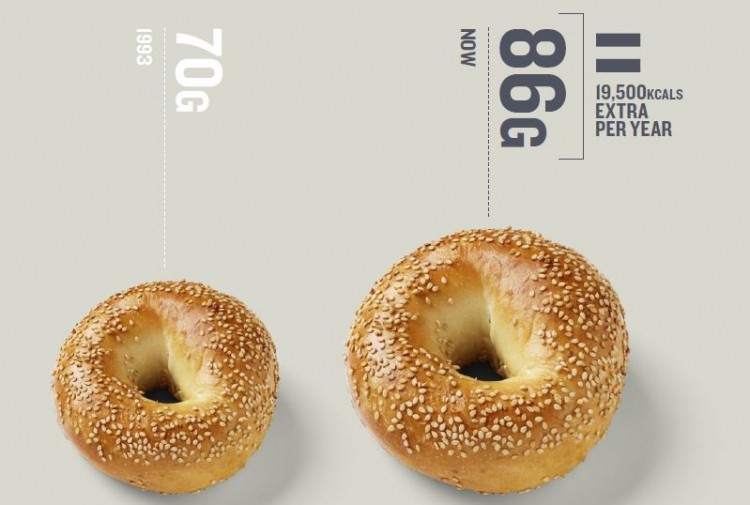What’s an average serving? Portion size guidance ‘no longer fit for purpose’

Recent EU legislation on the provision of food information to consumers (FIC) specifies that food portions should be easily recognisable and quantified on food labelling, but it does not provide guidance on how to quantify a portion on pack, the BHF said.
In the UK, the government has recommended that industry display per portion values on front-of-pack nutrition labels for calories, saturated and total fat, sugar and salt, and therefore, the BHF argues it is necessary to base this information on realistic portion sizes.
With that in mind, the organisation commissioned research to compare current portion sizes with those provided in a 1993 government publication, Food Portion Sizes. It found an increase across most categories over the past 20 years, including for muffins, bagels, pizzas, pies and ready meals.
“We know that portion sizes influence how much we eat. Put simply, larger portions encourage us to eat more – and shape our view of what is a normal amount to eat,” BHF chief executive Simon Gillespie said in a foreword to the report.
Who ate all the pie?
In one case, a chicken curry and rice ready meal was 53% larger today than it was in 1993, providing an extra 420 calories. On average, individual meat lasagne servings were 39% larger, and individual chicken pies were 40% larger.
However, some portion sizes had shrunk. Average tortellini portions were 49% smaller than those of 20 years ago, milk chocolate bars tended to be smaller than the 1993 average of 54 g and ice creams also tended to be smaller today.
The portion size of some single-serve products, including crisps, corn flakes, and cheddar cheese, were all identical to the information provided twenty years ago.
“Our research shows that manufacturers have moved away from the government’s 1993 publication to the extent that this is no longer fit for purpose in helping retailers to size portions appropriately to reflect a 2013 portion size,” the BHF said. “As a result, this is making it difficult for consumers to compare products across different brands and control their portion sizes.”
The organisation urged food companies to help the government to ensure that portion sizes were standardised across the industry, and to adopt the recommended – but not mandatory – front-of-pack nutrition labelling.
























